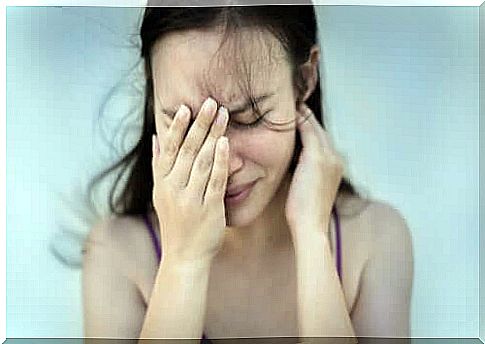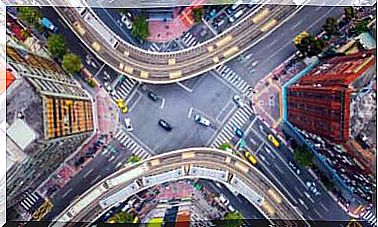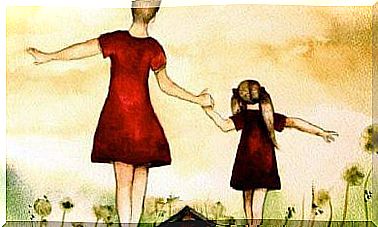The Chemistry Of Anxiety

In this article, we’ll talk about the chemistry of anxiety, or how it works. We will take a short journey, from the observation of a dangerous stimulus to the subsequent increase in lymphocytes.
Due to its incidence and the suffering it exerts on the population, it is necessary to know how anxiety works and how it starts, in order to do a correct prevention work.
For both you and those around you, knowing how anxiety works can help us avoid catastrophic thoughts, cut off behavioral feedback, and manage emotions derived from or associated with it.

Is anxiety bad?
Many experts treat stress and anxiety as synonymous, although the weight of the prejudices that mental health suffers today rests on anxiety.
They are closely related to the alarm response. However, anxiety should not be understood in terms of good or bad, but functional or not.
When people feel anxiety or fear in the face of a stimulus and are willing to attack or flee, in many cases this activation acted as a stimulus.
This mechanism has been with us for centuries, so much so that it gave rise to our survival. Without it, we would not be able to act quickly, make decisions and count on the advantages that anxiety gives us, changing our body so that, for example, we can better see the outlines of objects.
The problem arises when a person reacts with an alarm or anxiety response to non-threatening stimuli.
In this way, the person prepares his body to flee or fight, even if it is not necessary. Precisely, this is the source of the strange sensations we feel when nervousness suffocates us.
The Chemistry of Anxiety: What Happens to Our Body
Stimulus orientation: run or fight
Upon detecting a threatening stimulus, the person usually has an orientation response to that stimulus, which allows him to look, see, calculate. It can adopt a reaction in seconds, like fight or flight.
Although people are no longer chased by lions, this is equally applicable to any stimulus that the person perceives as a threat.
In this sense, it can be a simple comment or a noise of undetermined origin. The only thing necessary is for the subject to understand what happened as a threat to him.
Sympathetic nervous system: the game of dominoes
From stimulus orientation, the chemistry of the body begins to change, giving rise to the chemistry of anxiety. Within the sympathetic nervous system, activation of the hypothalamic-pituitary adrenal axis occurs with the consequent release of ACTH – the adrenocorticotropic hormone.
The release of this hormone is regulated by the hypothalamus, a region involved in the regulation of feeding, fluid intake, mating and aggression. Therefore, it stands to reason that it also appears in the neurohormonal mechanisms of the alarm response, specifically stimulating the pituitary to release ACTH.
The ACTH hormone stimulates the adrenal glands to release glucocorticoids into the blood.
Glucocorticoids: resistance in stressful situations
Glucocorticoids are needed so that the individual can withstand stressful situations. These situations can vary, from physical injuries such as breaking a leg or falling from a tree, to situations involving anxiety, fear, fasting…
Glucocorticoids stimulate the synthesis of adrenaline and endogenous opioid peptides. The latter are involved in homeostasis – maintenance of body balance – pain regulation, cardiovascular control and stress.
The release of adrenaline and other hormones results in the interruption of bodily functions that can be a burden at that time of anxiety, stress or flight, such as digestion, which consumes a lot of energy.
Therefore, if after an anxiety attack we feel a strange stomach or have little desire to eat, it is advisable to be patient and let the body manage its own functions again.
In the case of opiates, they are released to better tolerate pain in the event of a wound, something the body is prepared for.
Anxiety Chemistry Results
This hormonal activation leads to numerous changes, not just the variables that we usually fixate on. The person is experiencing many internal changes that are not noticed on the outside or are directly marked in a special way.
After the action of hormones, the heart rate increases to facilitate the pumping of blood and oxygen is rapidly distributed throughout the body. This is very characteristic of anxiety and is one of the results of this process that most bothers the person.
Among the techniques used by psychologists to reduce this activation, we can find controlled breathing and progressive muscle relaxation. Both techniques include breathing as a way to reduce anxiety, reducing the heart rate that we raise in an unconscious (deliberate) way.
In addition, the spleen contracts with the consequent release of red blood cells. This is very useful if an injury occurs – remember that the original anxiety response is nothing more than an alarm response to a danger – or if there is an infection.
Red blood cells are part of our immune system: they protect us against possible infection.
Likewise, sugar is synthesized and released by the liver. At the same time, it increases respiratory capacity and bronchial dilation, optimizing lung performance in the face of increased oxygen demand.
Also, the pupils dilate, because as more light enters, we define the edges of objects better. Finally, in relation to the possible danger, blood clotting and lymphocyte circulation are increased.

The Key to Reducing Anxiety
For all of the above, if the chemistry of anxiety is specific to the purpose it was designed for, so are the chemistry of relaxation and the mechanisms that activate it. In fact, the main purpose of relaxation techniques is related to the parasympathetic nervous system.
While the sympathetic branch leads to activation – mentioned above -, the parasympathetic branch decreases muscle tone and slows down breathing. In addition, arterial vasodilation increases, increasing peripheral irrigation.
It also decreases respiratory rate, adrenaline and noradrenaline secretion by the adrenal glands, as well as basal metabolism.
The key to reducing anxiety is a fact: the sympathetic and parasympathetic systems cannot be activated at the same time. Therefore, the key lies in deactivating the sympathetic branch to activate the parasympathetic through relaxation and breathing techniques.
Anxiety, therefore, has a remarkable biological and physiological basis. The body helps and prepares for what may happen. On the other hand, we learned that the chemistry of anxiety is based on what a person thinks is dangerous or not.
Anxiety is not bad, on the contrary, or at least the physiological mechanisms that allow the anxiety response. It can be a problem when all stimuli, dangerous or not, trigger this anxiety response.
The body prepares for something that won’t happen: it’s like pressing the accelerator pedal without allowing the car to speed up. A meaningless wear.









